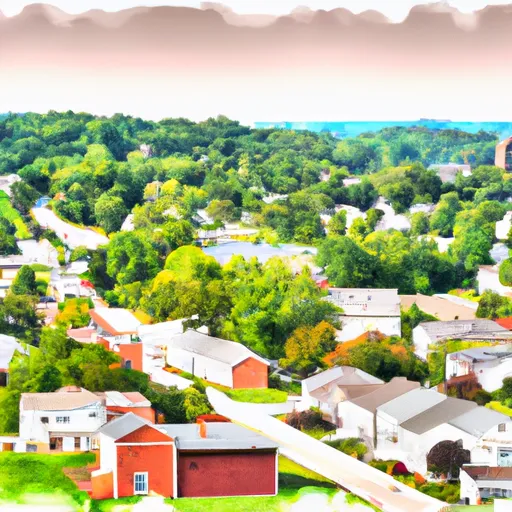-
 Snoflo Premium
Snoflo Premium
Get unlimited access to all our content
With no Ad interruptions! - Start Your Free Trial Login with existing account
Sloans-Valley
Eden Index
Climate
9.4
•
Recreation
6.8
•
Community
0.9
•
Safeguard
6.4/10

Sloans Valley is a small community located in Pulaski County, Kentucky. The region experiences a humid subtropical climate, characterized by hot and humid summers and mild winters. The average high temperature in summer ranges from 80°F to 90°F (27°C to 32°C), while winter temperatures typically range from 30°F to 50°F (-1°C to 10°C). Precipitation is evenly distributed throughout the year, with an average annual rainfall of about 46 inches (117 cm).
Hydrologically, Sloans Valley is home to Lake Cumberland, one of the largest man-made lakes in the United States. The lake covers around 65,530 acres (26,548 hectares) and offers various recreational opportunities such as boating, fishing, and swimming. It is known for its diverse fish population, including bass, crappie, and muskie, making it a popular destination for anglers.
In addition to Lake Cumberland, the surrounding area offers several outdoor recreational opportunities. Visitors can explore the nearby Daniel Boone National Forest, which provides hiking trails, camping areas, and opportunities for wildlife observation. Sloans Valley is also a great place for water sports enthusiasts, with options for jet skiing, water skiing, and kayaking. Overall, the region's climate, hydrology, and outdoor recreation opportunities make Sloans Valley an attractive destination for nature and adventure lovers.
What is the Eden Index?
The Snoflo Eden Index serves as a comprehensive rating system for regions, evaluating their desirability through a holistic assessment of climate health, outdoor recreation opportunities, and natural disaster risk, acknowledging the profound impact of these factors on livability and well-being.
Climate Health Indicator (CHI): 9.4
Sloans-Valley receives approximately
1266mm of rain per year,
with humidity levels near 79%
and air temperatures averaging around
14°C.
Sloans-Valley has a plant hardyness factor of
6, meaning
plants and agriculture in this region thrive during a short period during spring and early summer. Most
plants will die off during the colder winter months.
By considering the ideal temperature range, reliable water supplies, clean air, and stable seasonal rain or snowpacks, the Climate Health Indicator (CHI) underscores the significance of a healthy climate as the foundation for quality living.
A healthy climate is paramount for ensuring a high quality of life and livability in a region, fostering both physical well-being and environmental harmony. This can be characterized by ideal temperatures, reliable access to water supplies, clean air, and consistent seasonal rain or snowpacks.
Weather Forecast
Streamflow Conditions
Upper Cumberland
Area Rivers
Upper Cumberland
Snowpack Depths
Upper Cumberland
Reservoir Storage Capacity
Upper Cumberland
Groundwater Levels
Recreational Opportunity Index (ROI): 6.8
The Recreational Opportunity Index (ROI) recognizes the value of outdoor recreational options, such as parks, hiking trails, camping sites, and fishing spots, while acknowledging that climate plays a pivotal role in ensuring the comfort and consistency of these experiences.
Access to outdoor recreational opportunities, encompassing activities such as parks, hiking, camping, and fishing, is crucial for overall well-being, and the climate plays a pivotal role in enabling and enhancing these experiences, ensuring that individuals can engage in nature-based activities comfortably and consistently.
Camping Areas
| Campground | Campsites | Reservations | Toilets | Showers | Elevation |
|---|---|---|---|---|---|
| Parksville | 93 | 872 ft | |||
| Lake Conasauga | 35 | 3,152 ft | |||
| Sylco | 12 | 1,219 ft | |||
| Tumbling Creek | 8 | 1,505 ft | |||
| Thunder Rock | 42 | 1,140 ft | |||
| Cottonwood Patch | 9 | 971 ft | |||
| Fort Mountain State Park | None | 2,656 ft | |||
| Jacks River Fields | 14 | 2,865 ft | |||
| Lake Conasauga Overflow | 13 | 3,172 ft | |||
| Chilhowee Rec Area | 150 | 2,094 ft |
Nearby Ski Areas
Catastrophe Safeguard Index (CSI):
The Catastrophe Safeguard Index (CSI) recognizes that natural disaster risk, encompassing floods, fires, hurricanes, and tornadoes, can drastically affect safety and the overall appeal of an area.
The level of natural disaster risk in a region significantly affects safety and the overall livability, with climate change amplifying these risks by potentially increasing the frequency and intensity of events like floods, fires, hurricanes, and tornadoes, thereby posing substantial challenges to community resilience and well-being.
Community Resilience Indicator (CRI): 0.9
The Community Resilience Indicator (CRI) recognizes that education, healthcare, and socioeconomics are crucial to the well-being of a region. The CRI acknowledges the profound impact of these elements on residents' overall quality of life. By evaluating educational resources, healthcare accessibility, and economic inclusivity, the index captures the essential aspects that contribute to a thriving community, fostering resident satisfaction, equity, and social cohesion.

